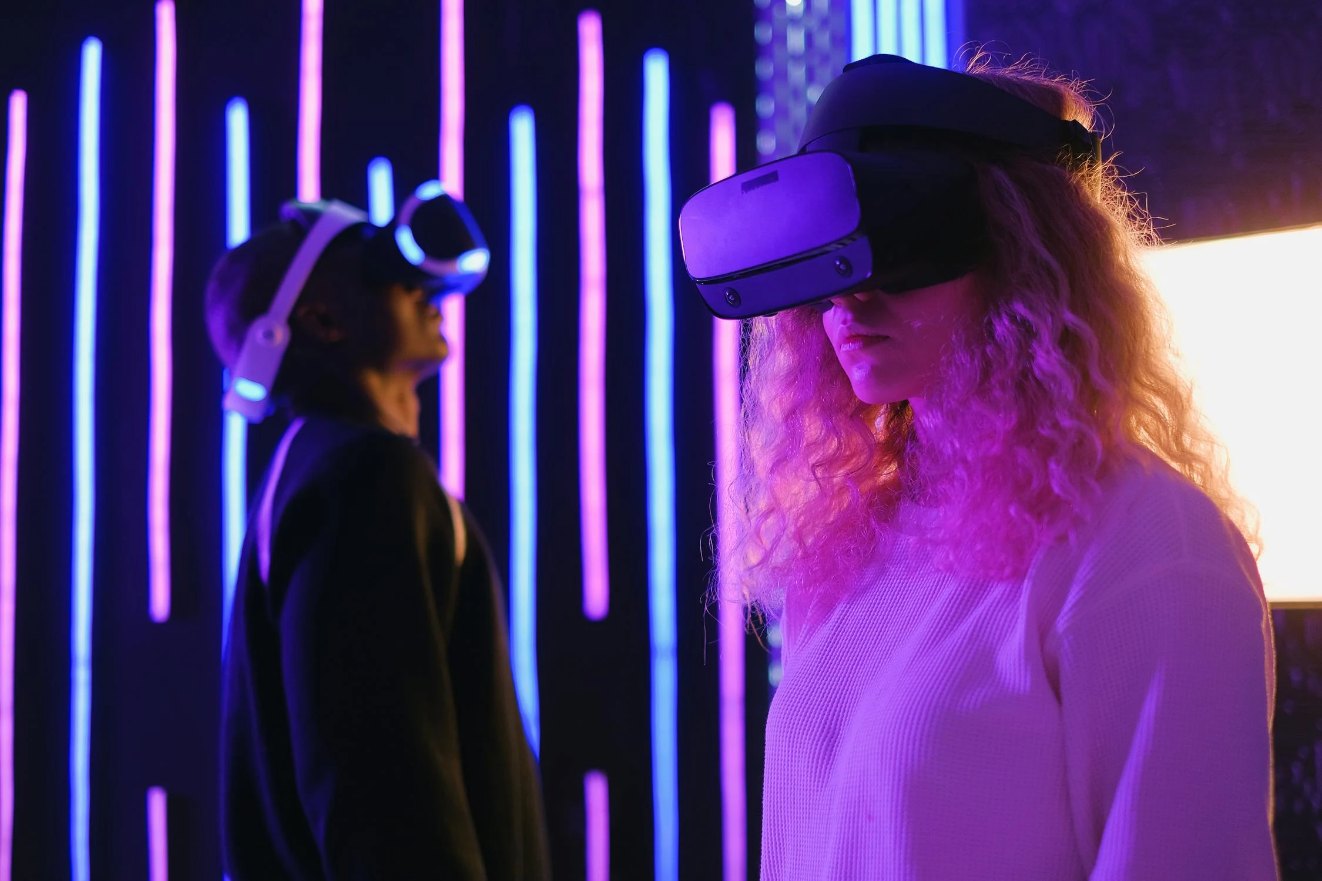How AR and VR Are Revolutionizing Remote Work: Virtual Offices of the Future

6 min read
05 Nov 2025
Augmented Reality (AR) and Virtual Reality (VR) are transforming the landscape of remote work by creating immersive and interactive virtual office environments. As remote work becomes more prevalent, these technologies offer innovative solutions for collaboration, productivity, and engagement, reshaping how we think about the future of work.
AR and VR technologies enable the creation of virtual offices that replicate the functionality and ambiance of physical workplaces. With VR, employees can enter fully immersive digital environments that mimic real-world office settings. These virtual spaces can be customized to reflect company branding and organizational structures, providing a familiar and collaborative atmosphere for remote teams. VR meetings and conferences can be held in these virtual offices, allowing participants to interact as if they were physically present, improving communication and teamwork.
AR, on the other hand, enhances remote work by overlaying digital information onto the physical world. AR applications can display virtual screens, documents, and tools in the user's physical workspace, enabling them to multitask and access information without the need for additional physical devices. For instance, AR glasses can project virtual monitors, email notifications, and collaboration tools directly into a user's field of view, streamlining their workflow and enhancing productivity.
One of the key benefits of AR and VR in remote work is the ability to bridge geographical gaps and foster collaboration among distributed teams. VR environments enable team members from different locations to interact in real-time, participate in brainstorming sessions, and engage in project discussions as if they were in the same room. This level of interaction helps maintain a sense of connection and team cohesion, which can be challenging in traditional remote work settings.
AR and VR also offer innovative solutions for training and onboarding. Virtual simulations and interactive scenarios can provide new hires with hands-on experience and training in a controlled environment. For example, VR can be used to simulate real-world tasks, such as operating machinery or navigating complex systems, allowing employees to practice and learn without the risks associated with physical training. AR can overlay instructional guides and tutorials, helping employees understand new processes and tools more effectively.
Despite these advancements, there are challenges to consider when implementing AR and VR in remote work. The cost of VR hardware and software, as well as the need for high-speed internet connectivity, may pose barriers for some organizations. Additionally, ensuring user comfort and addressing potential issues such as motion sickness or fatigue are important considerations for maintaining a positive user experience.
In conclusion, AR and VR are revolutionizing remote work by creating immersive virtual offices and enhancing collaboration and productivity. These technologies offer innovative solutions for bridging geographical gaps, improving training, and providing interactive work environments. As AR and VR continue to evolve, they will play a crucial role in shaping the future of remote work and transforming how we work and collaborate.

The AR Breakthrough That Will Make Blockchain Transactions Simpler Than Ever!
7 min read | 15 Nov 2025
How AI Is Making Blockchain Smarter and Safer – The Inside Scoop!
6 min read | 14 Nov 2025
The Big Tech Twist: How VR Is Set to Disrupt Blockchain Like Never Before!
7 min read | 13 Nov 2025
Unlocking the Power of AR: How Augmented Reality Is Set to Revolutionize Blockchain!
7 min read | 12 Nov 2025More Articles

Regulation or Innovation? Navigating the Legal Landscape of Blockchain
4 min read | 28 Sep 2025

Security Concerns in the Blockchain Landscape: Mitigating Risks and Building Trust
5 min read | 27 Sep 2025

Blockchain's Scalability Challenge: Can it Handle Mass Adoption?
5 min read | 26 Sep 2025

Blockchain Use Cases Beyond Finance: Healthcare, Real Estate, and More
4 min read | 25 Sep 2025
More Articles

The Environmental Impact of Blockchain: Exploring Sustainable Solutions
7 min read | 29 Sep 2025

Regulation or Innovation? Navigating the Legal Landscape of Blockchain
4 min read | 28 Sep 2025

Security Concerns in the Blockchain Landscape: Mitigating Risks and Building Trust
5 min read | 27 Sep 2025

Blockchain's Scalability Challenge: Can it Handle Mass Adoption?
5 min read | 26 Sep 2025
